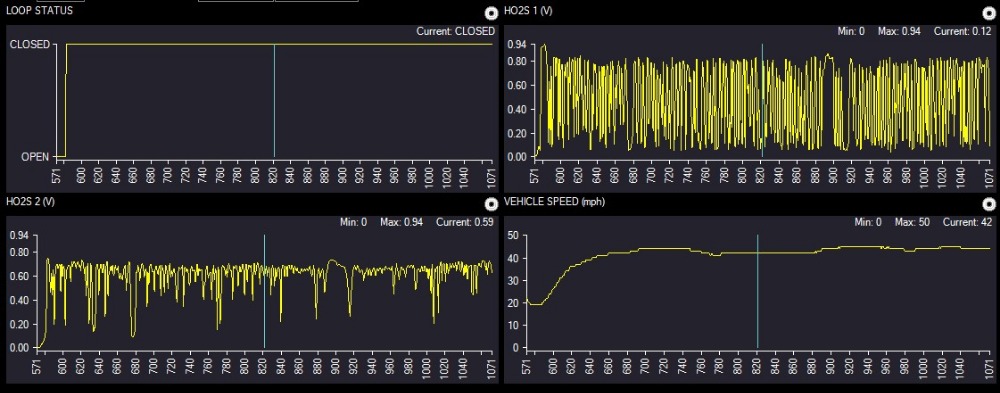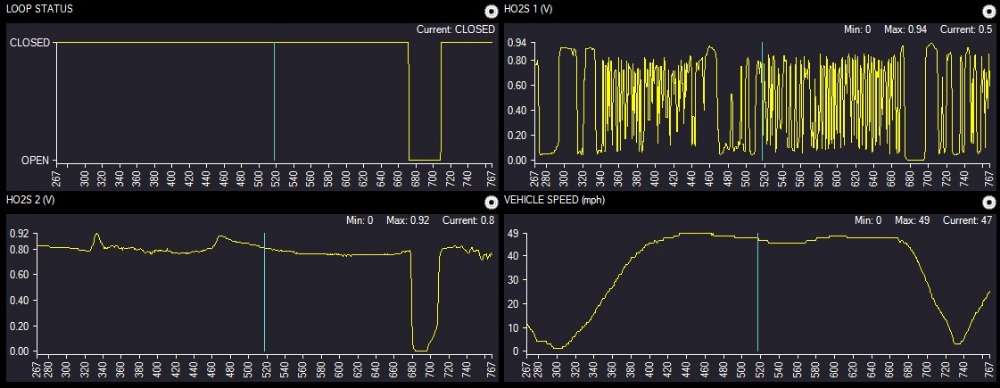Help us help you. By posting the year, make, model and engine near the beginning of your help request, followed by the symptoms (no start, high idle, misfire etc.) Along with any prevalent Diagnostic Trouble Codes, aka DTCs, other forum members will be able to help you get to a solution more quickly and easily!
po420 and po430. sensor data normal/ not normal
5 years 5 months ago #25102
by woody12
po420 and po430. sensor data normal/ not normal was created by woody12
2010 buick lacrosse ,3.0 direct inj. codes po420 and po430 both present. Post cat sensor data looks normal ( in park) through all rpm ranges ( idle to 3500 rpm) data reading is steady .6 -.7 volts on both sensors . On a drive test, sensor data shows bad cats on both banks, one worse than the other which explains why po420 appears first then a day or so later po430 will appear. Sensor data will stay close to pre cat sensor for awhile then drop to .2 volt, then back up. may bounce back and forth dropping way down before bouncing around above .450 then from .8 volts again dropping down to .2 again. After a wot during driving both( post cats) will stay high around .8 for a second or 2 then drop to the bottom, .2 . wot is the only part that looks okay. my question is : why does data look fine in park at different rpms but data is a classic example of a bad cat while driving? Is there something showing up with engine under a load that's not there while in park? Or is this just common for it to only show up while driving in the early stages ? Flow chart says that the ecm will preform a test at idle but only after vehicle is driven . Data at idle looks the same as described above ( normal) even after a drive. This is the 3 way cat system which is not going to be cheap to replace so I'm trying to get a better understanding of what I'm seeing.
Please Log in or Create an account to join the conversation.
5 years 5 months ago #25103
by Tyler
Replied by Tyler on topic po420 and po430. sensor data normal/ not normal
It's true that the ECM does test the cats at idle after a drive, but the conditions are more specific than that. It's after a trip on the highway, at a stop, foot on the brake with the transmission in Drive. The ECM will then do it's invasive test where it jams the mixture lean and rich, then watches the oxygen storage using the downstream sensors.
I mention that because I'm not sure that the switch rate of the downstream sensors is monitored for catalyst testing (at idle or while driving), just the oxygen storage. Once you know how to make the monitor run, you can see the ECM do the test on the scan data and watch the results.
Paul discusses oxygen storage testing in this video, if you haven't seen it already:
If it helps at all, here's some data I took off a 2011 Equinox with a P0420. I'm guessing the downstream switch rate looks similar to yours?
This is after converter replacement:
IMO, if you've got good fuel trims, working O2's, no misfires, and no exhaust leaks, then it's converter time.
I mention that because I'm not sure that the switch rate of the downstream sensors is monitored for catalyst testing (at idle or while driving), just the oxygen storage. Once you know how to make the monitor run, you can see the ECM do the test on the scan data and watch the results.
Paul discusses oxygen storage testing in this video, if you haven't seen it already:
If it helps at all, here's some data I took off a 2011 Equinox with a P0420. I'm guessing the downstream switch rate looks similar to yours?
This is after converter replacement:
IMO, if you've got good fuel trims, working O2's, no misfires, and no exhaust leaks, then it's converter time.
The following user(s) said Thank You: chief eaglebear
Please Log in or Create an account to join the conversation.
Time to create page: 0.214 seconds



